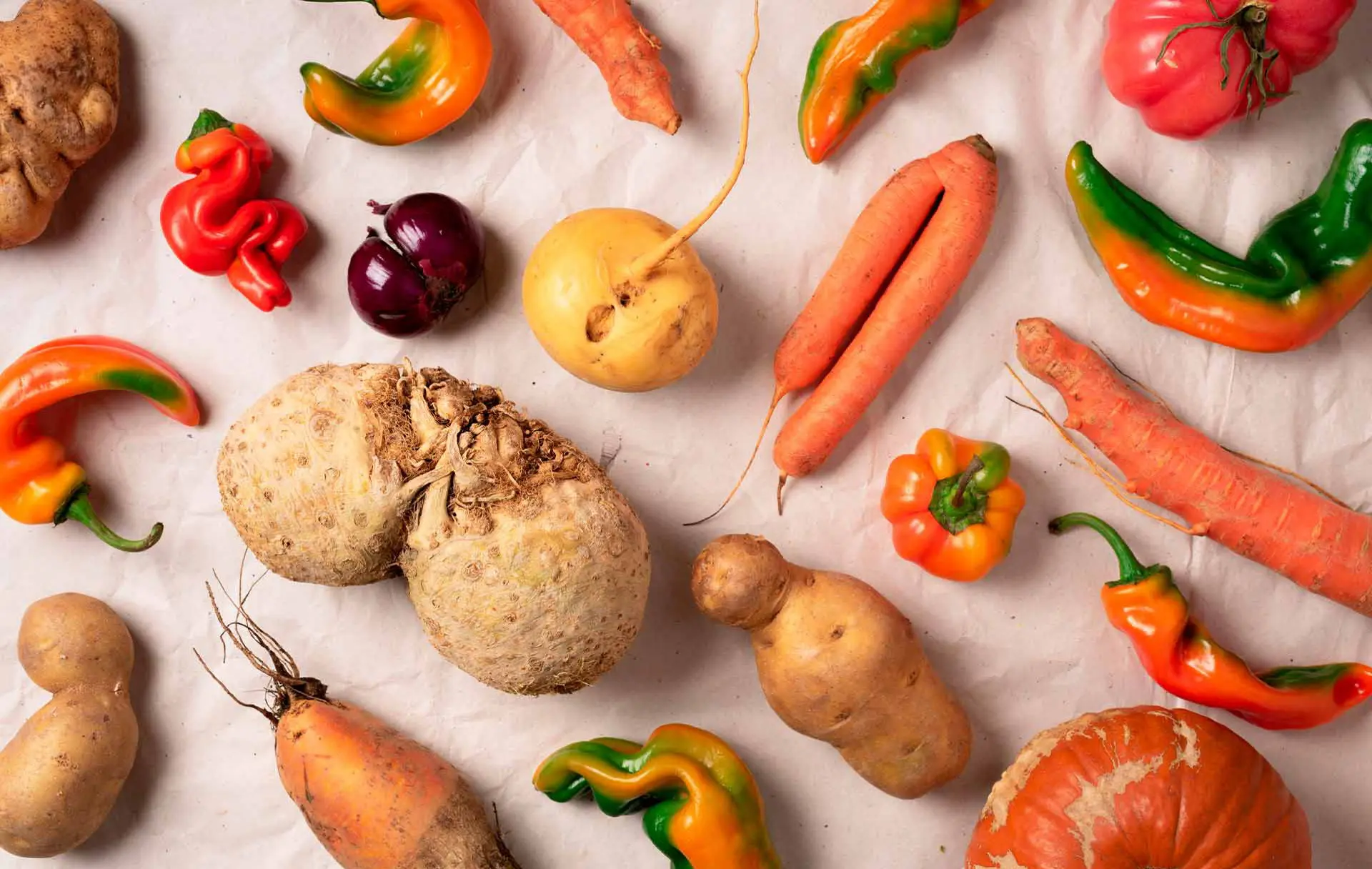We have a huge food waste problem happening in restaurants and cafes, supermarkets and households. A third of the world’s food goes uneaten every year and in United States, we waste 20-40 percent of the food produced every year. Food waste not only impacts the environment, but when we consider that one in nine people don’t have enough food to feed themselves, it truly is a disgraceful situation.
Thankfully, as the food waste issue has become more broadly understood, several movements have appeared to help curb food waste, including the Ugly Food Movement. One of the main reasons that food is wasted (especially vegetables and fruits) is because of the way it looks, meaning it doesn’t look perfect, so it is wasted, even though it is not rotten or bad in any way.
What you need to know about the ugly food movement
The Ugly Food Movement is a force for change and promotes the consumption of what is often called ugly, wonky or imperfect produce, with the goal of getting ugly produce back into supermarkets and onto consumers’ tables.
Currently, many farmers discard imperfect produce, which amount to about 25% of each harvest. And only for the simple reason that grocery stores and supermarkets don’t buy it and consumers, who have learned to shop with their eyes, reject imperfect produce as it’s mistakenly associated with bad quality. Organizations such as California-based, Imperfect Produce, promote the ugly food to customers and sell imperfect fruits and vegetables to people at a great discount.
These campaigns not only curb food waste but benefit everyone in the food chain. Farmers that have spent water, energy and resources growing the produce are able to recover the costs and profit from selling a greater amount of their harvest, grocery stores have increased foot traffic and public support and consumers can purchase delicious veggies at a reduced price. As more supporters join the “ugly food” movement, the impact increases exponentially. Not to mention the greatest benefit is to the environment: eating food rather than wasting it and having to grow more, saves millions of pounds of carbon emissions and water.
Rather than selling vegetable and fruit basket for home delivery, some grocery stores are innovating new business models for selling ugly produce, for example: “take what you need, give what you can” where people pay whatever they can afford for the food. The available produce is mostly donated and beyond sell-by and use-by labels but still perfectly edible.
So, what can you do to support the ugly food movements?
It’s easy to get involved: just shop for ugly or rescued food and help change perceptions as you do so! Check with your regular food stores and see if they are stocking “ugly” vegetables or fruits and make a point of purchasing them instead of the “pretty” ones. If they don’t seem to have any ugly produce ask them why and tell the store you’d be happy to buy it!
Your local farmers market is also a great place to get fresh produce that is imperfect, but packed with flavor. Although farmers tend to pick the nicest items for the markets, there is less pressure than when selling to larger retailers and you’ll probably find some irregular fruit and vegetables of every kind. Pick the odd ones or ask the farmers if you can purchase their rejected produce. The more we choose this type of produce, the more the farmers are encouraged to bring bigger quantities instead of wasting them.
You can also support food manufacturers in using “ugly food” in their products, which could inspire many more companies to do the same. Using produce that would have ended up as waste is a fantastic earth-supporting, sustainable practice, that gives you all the good feelings!
By becoming aware and vocal about the food waste problem, you are on your way to help reduce food waste, and you’ll possibly have some good laughs in the process checking out all the odd fruits and veggies! Share this article with others and help spread the word.
